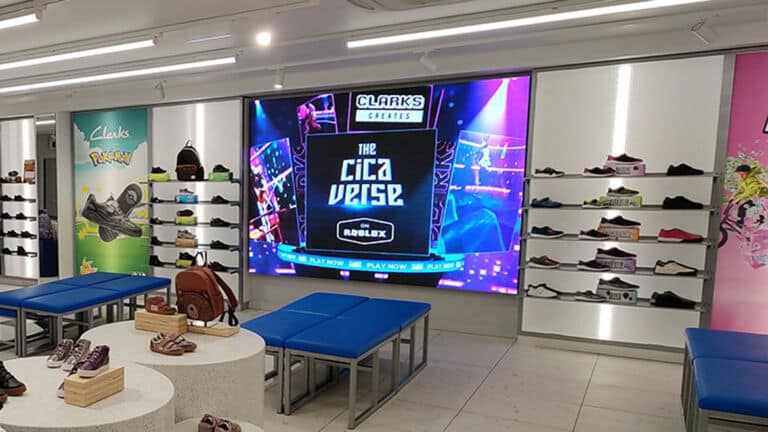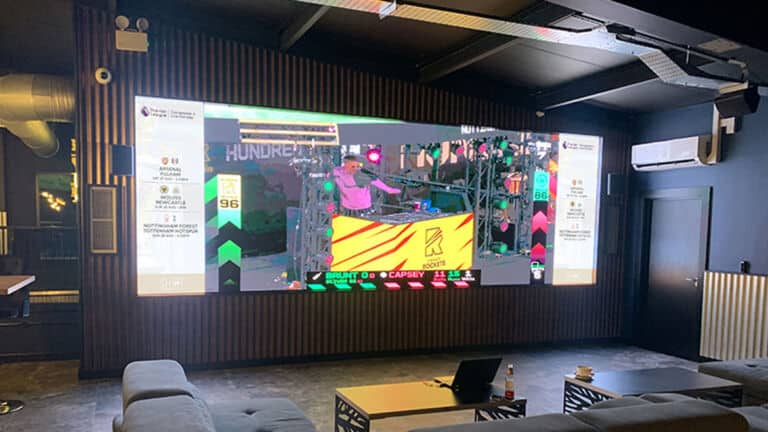Excellent Suggestions For Deciding On Lightweight Led Screen
Excellent Suggestions For Deciding On Lightweight Led Screen
Blog Article
What Is The Importance Of Pixel Pitch And Resolution When Choosing Led Displays?
When looking at LED displays, it is essential to take into consideration the resolution and pixel pitches. Both influence the clarity, the quality and overall appearance provided by the display. What makes them so crucial:
1. Image Quality
Pixel Pitch: The distance between the centers of each LED pixel and the centers of subsequent pixels is known as the pixels pitch. A lower pixel pitch means that the LEDs will be closer to each other. This leads to higher pixel density, and better resolution. This results in more detailed, sharp images.
Resolution: Resolution is the total number of pixels on the display typically expressed in terms of the form of width x height (e.g. 1920x1080). Higher resolutions allow for greater detail to be shown and gives a fuller experience. This is particularly important for large-screens, as the viewer is close to the screen.
2. Viewing Distance
Pixel pitch and optimal viewing distance are both closely linked. If the display will be located at a short distance, as in indoor screens for exhibitions, retail displays or displays placed within, then a lower (and consequently larger) resolution and pixel pitch is required to prevent an image that is pixelated. A larger pixel size may be sufficient for large outdoor displays or billboards which will be seen from a distance.
3. Content Versatility
Displays that have a smaller pixels pitch and a greater resolution are able to handle a greater variety of content types such as high-definition movies to intricate graphics and small text. This versatility can be crucial in applications like digital signage, broadcast studios and control rooms.
4. Cost-related Implications
Although a smaller pixel size can provide superior quality images, it increases the price of the screen. High resolution screens are more costly to manufacture because of the higher number of LEDs required. Consider the application and the distance to view when balancing the cost of high resolution against budget.
5. Application Specificity
The importance of resolution and pixels can depend on the application.
Indoor Displays: Often require smaller pixel pitches (e.g., 1.2mm to 2.5mm) to provide the highest resolution even at close viewing distances.
Outdoor displays: They may have larger pixel pitch (e.g. 4mm to 10mm) as they will be viewed from longer distances. The resolution of the display isn't as important.
6. The longevity and upgradeability
Pixel pitch continues to decrease as display technology advances. This allows higher resolutions in smaller areas. Displays with high pixel pitch will remain useful for a longer time, and lessen the requirement for upgrading.
Conclusion:
Pixel resolution and pitch are the primary factors in an LED display's performance especially in terms of image quality, viewing experience and the flexibility of content. Consider your budget, your target audience and your application when selecting LED displays. Take a look at the top creative led displays for more advice including rental led display screen, wall tv led, monitor transparent, wall tv led, led a board, led wall, transparent display monitor, tv the wall, flexible led screen display, transparent led panel and more.
What Are The Most Important Things To Consider In The Context Of Led Displays?
What's the importance of the Refresh rate when you're researching LED displays? Why is the refresh rate crucial?
1. Clarity and Image Smoothness
The term "refresh rate" is measured as the number of refreshes per second (measured in Hertz, orHz) through which the display refreshes its image. A higher refresh rate results in a smoother and more fluid movement and less flickering.
The importance. When it comes to displays that show videos or animations with fast motion the refresh rate should be higher than 3,840Hz is required to ensure smooth and fluid motion. This is especially important for applications like sports arenas, concerts, or digital signage, where a smooth visual performance improves the viewer's experience.
2. Flicker-Free Performance
Flicker: Displays that have low refresh rates could cause noticeable flickering, particularly when you view them through a slow-motion camera. Flickering can result in eye strain and fatigue which makes the display less pleasant to use for long periods of time.
Application: When the show will be recorded or recorded, such as in broadcasting studios, or during events, a higher refresh rate can reduce flickering, and will ensure that the video or image can be captured without artifacts.
3. Visual Quality under Different Lighting Conditions
Impact on brightness Impact on Brightness: A higher refresh rate can also impact the performance of a display under different lighting conditions. For instance, if the surroundings are brightly lit, a high rate of refreshment can help maintain image consistency and quality. This can reduce any visible flickering that could affect the effectiveness of the display.
Use: This could be beneficial for outdoor displays or stage events where the lighting changes frequently.
4. Content Compatibility
Synchronization is important: The refresh rates must be in line with the source of the content, whether it's a video playback system, an camera, or even live broadcast. The viewing experience can be negatively affected if refresh rates of the display and the content are not synced.
Application: In professional settings like large-scale events or TV studios, where content is being delivered from multiple sources, ensuring that the frame rate of refresh is consistent with the content frame rate is essential for seamless playback.
5. Enhance Your Viewing Experience
Motion Handling: High refresh rates are better at handling rapid-moving content, which reduces blurring and delivering an even more clear, detailed image. This is especially beneficial for applications such as broadcasting sports, games or situations where rapid-paced action is shown.
Application: A high refresh rate is perfect for venues that show sports, games, or content with high-action. The audience can see every detail.
6. Reduce Eye Strain
Comfort Low refresh rates may result in eye strain during long viewing periods, especially in situations where people are in close proximity to the display or when content is being viewed for prolonged durations.
Application for retail, office or public areas where people will be viewing the display for a long duration, a higher refresh rate could create an enjoyable and relaxing atmosphere.
7. Performance in Rental and Staging Applications
Adaptability. It is used for LED displays used for rental and staging and rental, they can be utilized in various settings and are able to display various types of data. A high rate of refresh ensures that it will be ready to accommodate any event's needs, regardless of whether it is live shows or corporate presentations.
Application High refresh rates can be beneficial in environments where displays must be able to quickly adapt to changing content and audience requirements.
Conclusion:
The speed at which the display refreshes is a key factor that influences the quality of LED displays, their visuals as well as comfort level and the flexibility. This is especially important when dealing with live events, content that is dynamic, or situations where the screen is utilized for prolonged durations of time. When looking into LED displays, prioritize the highest refresh rate to ensure a smooth, unflinching performance that enhances your viewers experience and fulfills the requirements of the particular application. Read the best led rental screen for blog info including led wall, led display device, wall tv, transparent led display screen, advertising displays, wall screen, led light sign board, outdoor screen led, outdoor led monitor, led wall and more.
What Is The Significance Of Calibration And Color Accuracy In Led Display Research?
Accuracy in color and calibration are essential when researching LED displays, especially for situations in which visual quality as well as brand integrity are critical. Here's why these factors matter:
1. Visual Quality and Realism
Color Accuracy: The extent that an LED display faithfully reproduces colors that the creators of the content intended. High color accuracy makes videos and images appear vibrant and authentic, and colors appear the way they ought to.
Importance : For presentations like advertising broadcasting, professional presentations and retail presentations accurate color reproduction will be crucial to maintaining the appeal of the content and transmitting the intended message.
2. Brand Integrity
Consistency: Companies that rely on specific color schemes as part of their branding have to ensure the colors are accurate. If the colors aren't accurate this could harm the brand's image.
Application: To guarantee uniform branding across all platforms including retail displays, corporate environments, advertising and other platforms, it's essential to keep brand colors accurate.
3. Engaging audiences and their impact
Displays that are more accurate in color give you a better viewing experience. Accurate colors can help communicate emotions and messages more effectively, enhancing the overall impact of a display.
Application: In entertainment venues or museums, as well as any other place where the content is designed to trigger specific emotions, accurate color reproduction ensures that the viewers receive the content exactly as it was intended.
4. Content Creator Intent
An accurate representation: Designers and designers typically spend a lot of time developing visuals using specific color palettes. An LED display that is able to accurately reproduce these colors ensures that the work they create is presented as intended.
Application: If you work in the field of digital art, film, photography or other fields where color is a critical component of aesthetics and storytelling, maintaining color accuracy can ensure that the creator's vision is honoured.
5. Calibration for Consistency
Uniformity across Panels: Calibration is used to make sure that all panels of the LED display have been calibrated so they show the same colors and brightness, which avoids mismatches or seams. This is crucial for large-scale display made of multiple panels.
Regular Maintenance Regular Maintenance: Even the best displays will lose color accuracy with time. Regular calibration is essential to maintain consistent performance and ensure the display continues to meet quality standards.
Applications For video walls, large outdoor displays and multi-panel layouts, calibration is vital to ensure an even and consistent appearance. This is essential to ensure professional installation.
6. Effect on Content Types
Diverse Content needs: Various kinds of content have different requirements for color accuracy. Displays for medical imaging, for example, require a high degree of accuracy to provide accurate diagnostics. Advertising displays however can be more focused on vividness and saturation.
Application: In areas like medical imaging, retail at the highest level or design, the ability of finely calibrating color settings will ensure that the display will meet the requirements for the content displayed.
7. Technology and Specifications
Bit Depth and Color Gamut: Displays with high bit-depth and that have wide color gamuts (like DCI-P3 or Rec. 2020 ) provide higher accuracy in color and can reproduce more colors. Understanding these specs is essential in selecting a monitor to be used to use in applications where accuracy is the top concern.
Advanced Calibration tools: Many modern LED displays come with sophisticated calibration tools that include software. This allows for precise adjustments, and also ensures that the display will remain accurate throughout the years.
Application: Displays that have high quality and accurate color, as well as calibration capabilities are essential in industries in which color fidelity can't be compromised, for example graphic design, production of films advertising.
Conclusion:
Color accuracy is vital for LED displays that deliver superior quality images that are in line with standards of the brand. Accurate color reproduction is crucial for maintaining visual integrity and achieving desired effects, whether the display is used for advertising or entertainment, professional presentations, medical imaging, or other specialized fields. When researching the options for LED displays, give priority to color accuracy and calibration, particularly in the case of an application that needs accurate colors and constant performance. View the most popular outdoor fixed led display for more recommendations including led screen display, led on screen, display light led, display device, led rental screen, translucent led screen, led wall, led video wall, display device, led a board and more. 